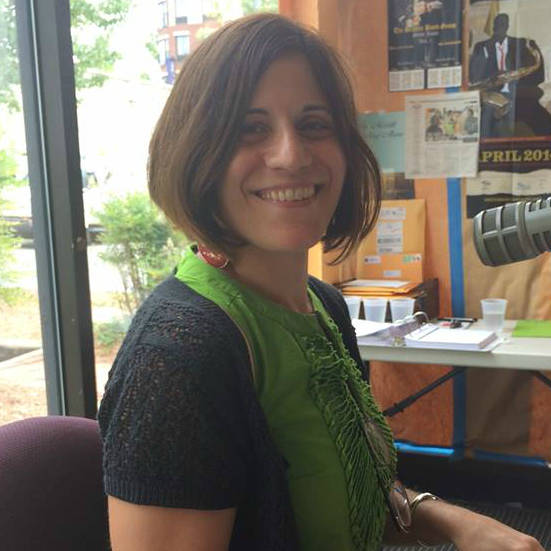Many of us may remember the often very implausible notions we had of “where babies come from” when we were kids.
And even as we learned more details when we got older, many of us still entered adulthood with only a partial understanding of the complexities of pregnancy, childbirth and sexual and reproductive health care. These are expansive and complicated topics, and there is still an incredible amount of stigma that creates barriers to honest and open conversations on these issues.
This silence and lack of understanding comes at a price, allowing people opposed to reproductive rights and freedom to use misinformation, inflammatory rhetoric and shame to push policies that restrict access to the full range of reproductive health care options, including access to safe and legal abortion. These myths and inaccuracies do nothing to further maternal health, and instead are used to justify creating arbitrary barriers to access to abortion.
Pregnancy is a complex topic and every experience is also very unique for each person. For every easy, straightforward pregnancy that was planned, there is an unplanned pregnancy, a complicated pregnancy, or a pregnancy that takes an unexpected and even frightening turn.
Patients and physicians need to be able to make decisions based on sound medical practices and science, and on what they feel will be the best decision in that particular situation. As this federal administration continues trying to criminalize abortion, advocates for comprehensive reproductive health care are working to ensure safe and legal abortion throughout pregnancy is an option that is available if and when it is needed.
This advocacy has a particular urgency right now, as abortion rights are being eroded in states across the country, including attempts at bans on abortion past six weeks, and total bans on abortion should Roe v. Wade be overturned. As the U.S. Supreme Court has been stacked with justices willing to place their personal feelings above medical science and the health, safety and personal decisions of women and others seeking reproductive health care, reproductive health advocates are doing what they can to ensure patients and their physicians have the safe and legal options available that they may need.
The recently passed New York Reproductive Health Actw as not the radical expansion of abortion access that abortion rights opponents are making it out to be. New York had an old law on the books that criminalized abortion after 24 weeks with very few exceptions. This violated the standard set in Roe v. Wade, which stated that even later in pregnancy, states could not arbitrarily restrict access to abortion that is necessary to preserve the life and health of the pregnant person, and that patients and their physicians — not politicians — can and should be the ones making these decisions.
Rather than forcing patients to travel out-of-state, which is often prohibitively costly and can make a risky health situation even worse; and rather than tying the hands of physicians who are trying to offer the best care they can for their patients, New York lawmakers opted to ensure people could access the care they need where they live, with the medical team they trust.
This standard set by the U.S. Supreme Court continues to be supported by seven in 10 Americans today. And this is the standard that was reaffirmed by the 2016 U.S Supreme Court decision in Whole Women’s Health v Hellerstadt, which ruled that states could not arbitrarily restrict abortion access by imposing regulations that are not based in science and best medical practices. With the introduction of the 2017 Whole Women’s Health Act in North Carolina, pro-choice lawmakers in the General Assembly were simply trying to bring the state’s abortion laws in line with the 2016 Supreme Court decision.
Neither of these bills is an extreme change from the status quo. Allowing politicians to make these decisions for everyone and prohibiting abortion in all cases is an extreme position; and the ultimate goal of anti-abortion lawmakers and their supporters.
In a culture that stigmatizes not just abortion but also miscarriages and pregnancy complications, it’s easy for myths and misconceptions to take hold. But just as those myths do not replace sound medical science, they also should not be the basis for laws.
The vast majority of abortions in this country (89 percent) occur during the first 12 weeks of pregnancy. When an abortion occurs later in pregnancy, it is often because something unexpected and potentially dangerous has happened. Throughout pregnancy, many decisions need to be made, sometimes with limited information, and always without the benefit of a crystal ball. Patients deserve access to the full range of health care options available, including access to safe abortion if it is needed. And they deserve to have physicians trained and able to support those decisions.
Our cultural views around the role of women and the nature of motherhood are too often still deeply rooted in sexist attitudes and beliefs, and this impacts how we view others’ choices. Patients who make decisions about later abortion need our support, not our projected expectations, armchair diagnoses, and judgments.
Laws like the one in New York are giving patients and providers the tools they need to make compassionate, thoughtful, potentially difficult, and very personal decisions about complex and often unexpected medical situations. We need to match our laws to our realities, not to our myths.
Patients have been long been sharing their stories about later abortion to push back against the inflammatory and inaccurate myths that are being spread about their experiences. You can read some of these stories here, here, here and here.









